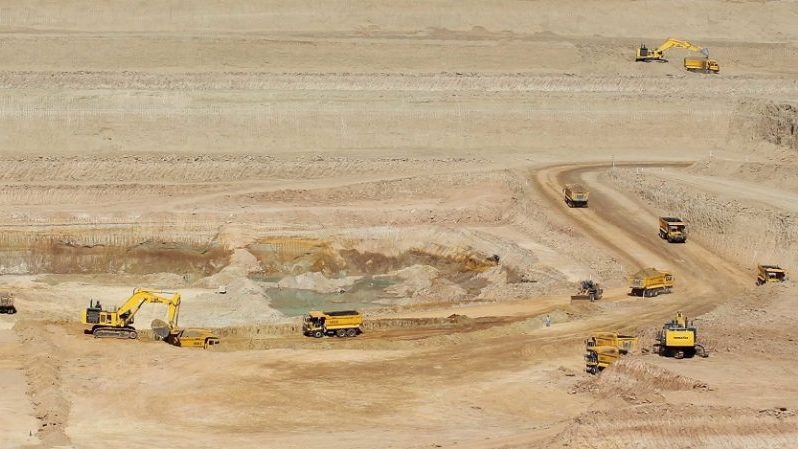Investment deals emerging from China’s belt and road summit 25-27 April show continued support for controversial coal projects, despite leaders’ green rhetoric.
The official round-up of conference outcomes highlighted Chinese involvement in a recently opened coal mine and 660MW power plant in Thar desert, Pakistan; and Vietnam’s 1,200MW Nam Dinh coal power station.
Media reports and company announcements also flagged coal projects in Turkey, Cambodia and Indonesia, as compiled by Greenpeace campaigner Yan Wang. Most announcements signalled advancement on existing projects, rather than new deals.
President Xi Jinping told dignitaries, including more than 30 heads of state, on Friday his flagship foreign policy “aims to promote green development”.
The remarks respond to rising concern about the carbon footprint of China’s coal power spree abroad, which risks blowing international climate goals.
Some 25 countries signed up to a “green development coalition” in Beijing, while 28 joined the “belt and road energy partnership”. There was little overlap between the two groups.
Imran Khan adviser: Pakistan to apply strict green rules on Chinese coal deals
Pakistan was one of the few nations with a foot in both camps. Prime minister Imran Khan welcomed “substantial progress” on developing the country’s energy supplies and called for partnership to scale up his mass tree-planting policy.
“I suggest we launch a joint project to plant 100 billion trees in the next two years, so that we can mitigate the effects of climate change for our coming generations,” he said at the summit.
On coming to power in 2018, Khan’s climate chief Malik Amin Aslam warned Chinese-backed coal projects spelled “potential disaster” for the environment, but said it was too late to pull out. The government could only make the “best out of a bad situation” and enforce green standards, he said.
The vast majority of Chinese investment in Pakistan continues to flow into energy: mostly coal, followed by hydroelectric, grid, solar and wind power installations.
On Saturday, Khan’s industrial adviser Razak Daoud attended the signing ceremony for a 700MW coal power plant, China Machinery Engineering Corporation announced.
Turkish supreme court blocks coal plant, as wave of new projects stalls
Turkey’s leadership shunned this year’s summit, citing China’s treatment of its Uighur Muslim minority and “debt trap diplomacy” – accusing it of predatory lending to secure strategic advantage.
That did not stop Shanghai Electric Power signing a deal with Chinese banks earlier in April to build Hunutlu coal power station in southern Turkey. Financial partners include China Development Bank and Bank of China, who on Thursday signed up to voluntary green investment principles.
Environmentalists are fighting the proposal, which is among 13 plants planned for Iskenderun Bay. They warn it threatens two protected species of turtle and human health.
Funda Gacal of the Health and Environment Alliance said in a statement: “We are worried about the aggravation of disease and ill-health of the population with new coal, given that there was already a 50% increase in the number of deaths from respiratory diseases from 2009 to 2017 in Adana city.”
We need your help… Climate Home News is an independent news outlet dedicated to the most important global stories. If you can spare even a few dollars each month, it would make a huge difference to us. Our Patreon account is a safe and easy way to support our work.
It was not all fossil fuel energy dealing at the summit. The Silk Road Fund invested in the DEWA 950MW concentrated solar power park in Dubai, while the Export-Import Bank of China signed a loan agreement for solar PV and hydroelectric projects with Argentina’s finance ministry.
Over 2013-18, Chinese power project loans were heavily weighted towards coal, according to analysis from NRDC. Lending to renewables increased sharply in 2018, but it is too early to say whether – and how fast – the switch towards wind, solar and hydro will continue.
